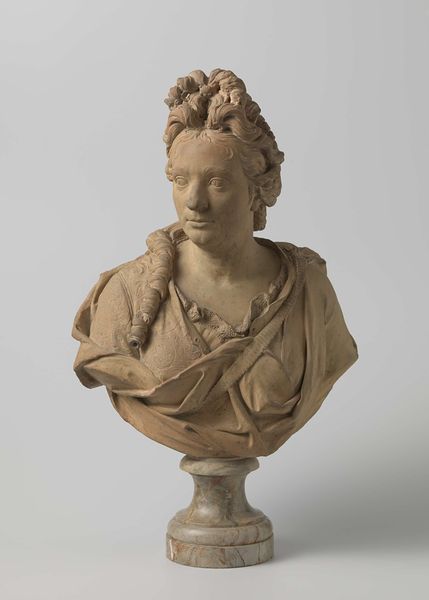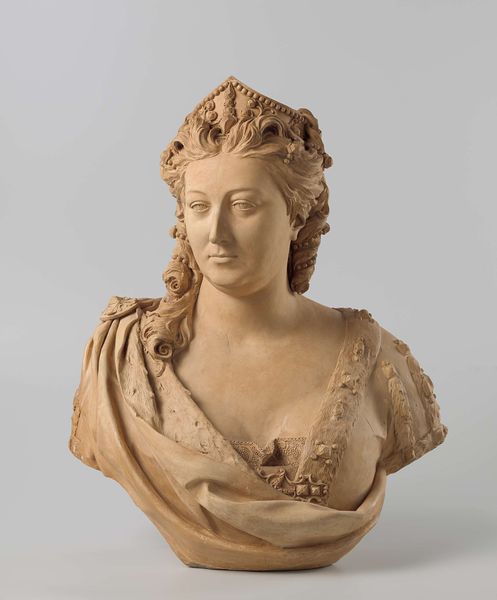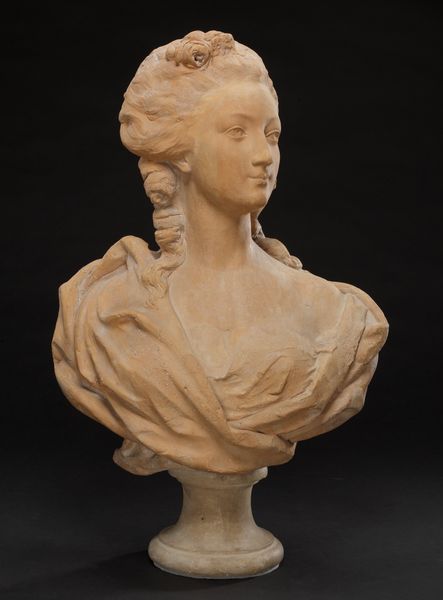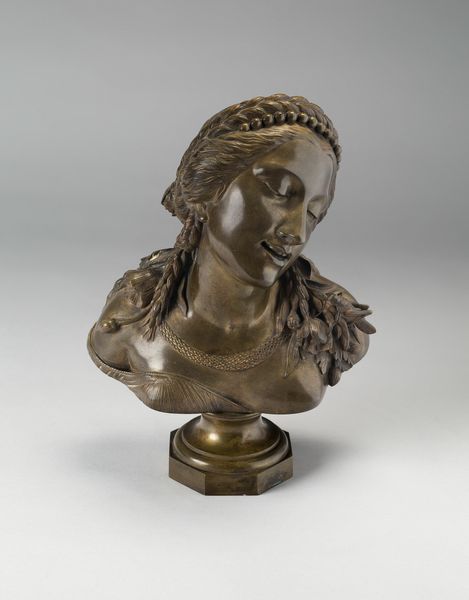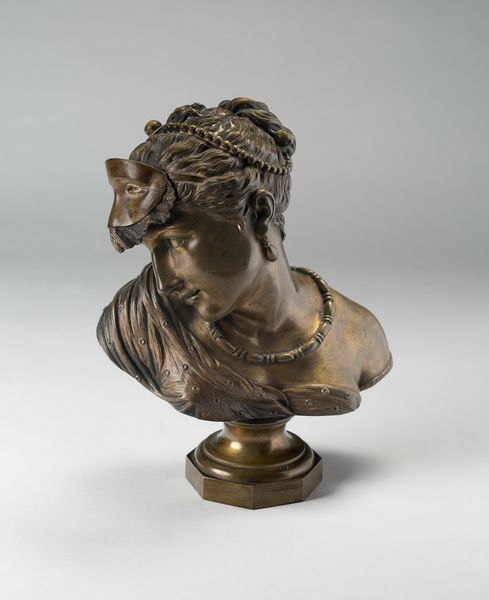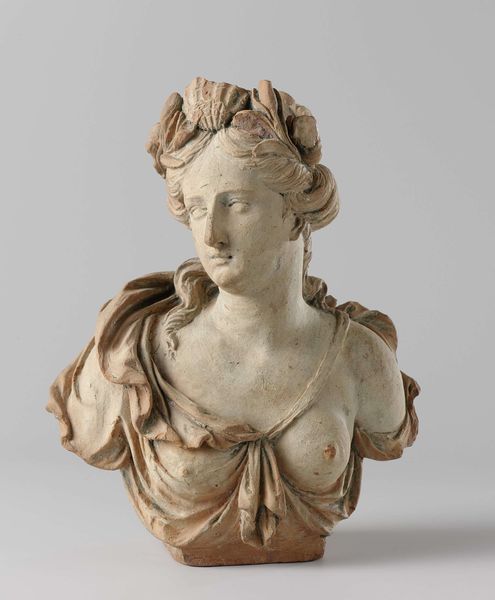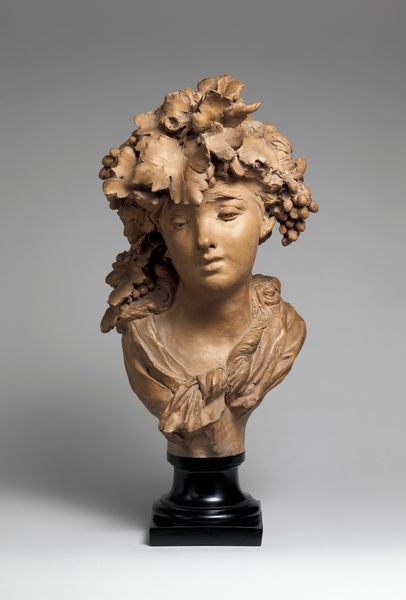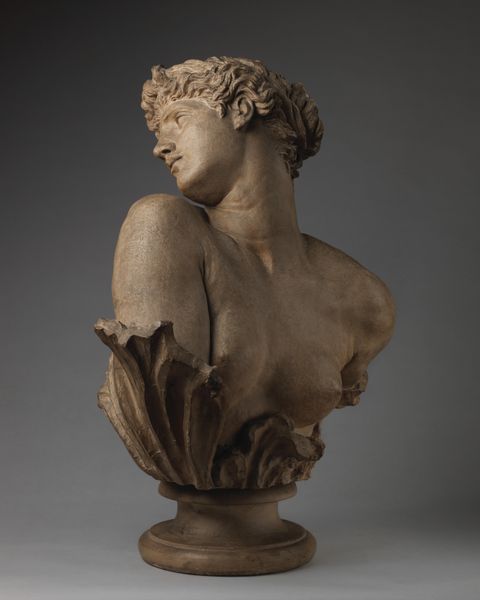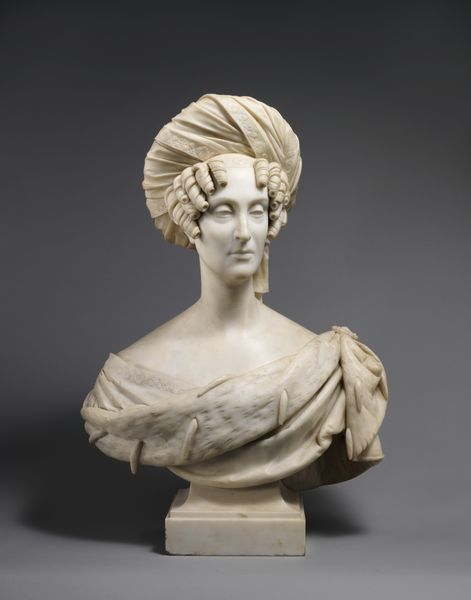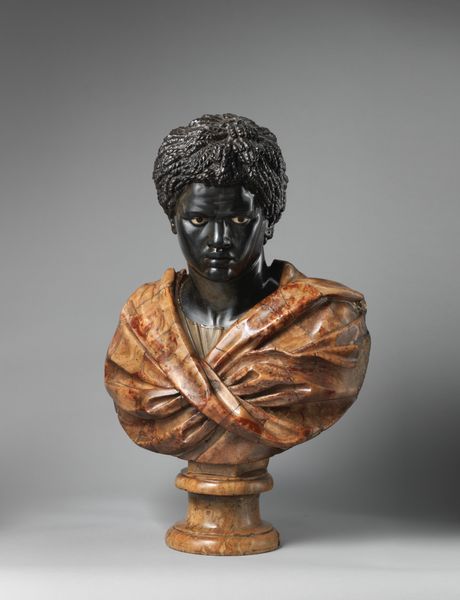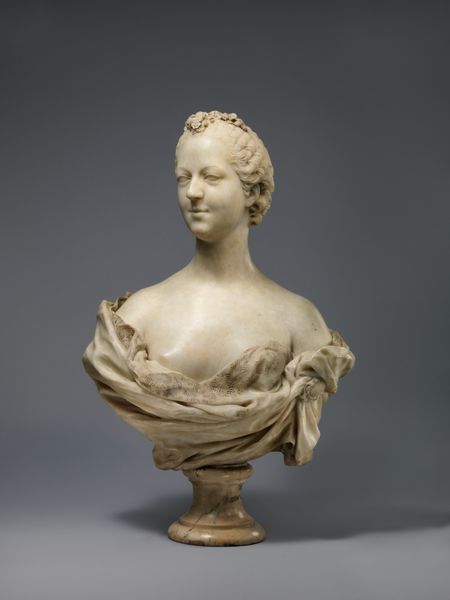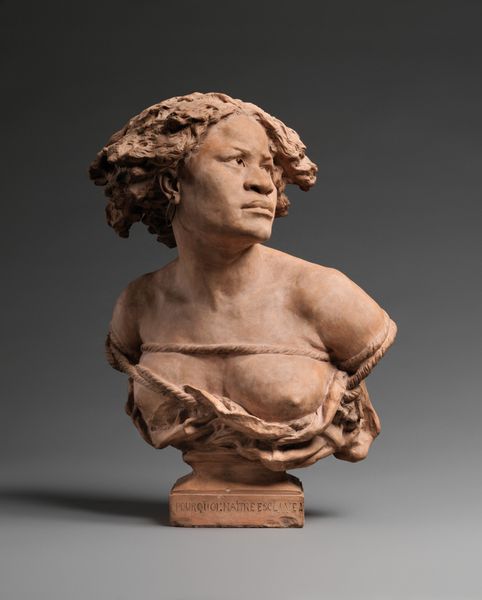
Dimensions: Overall (with base): 16 1/2 × 9 × 8 in. (41.9 × 22.9 × 20.3 cm); Height (without base): 14 in. (35.6 cm)
Copyright: Public Domain
Jean-Baptiste Carpeaux made this terracotta bust, Bacchante with lowered eyes, sometime in the mid-19th century. It represents a female follower of Bacchus, the Roman god of wine, freedom, and ecstasy. In Second Empire France, the Bacchante held particular cultural significance. It was a symbol of sensuality and uninhibited behavior that can be seen as either liberating or corrupting, depending on your point of view. Consider how the visual elements – the tilted head, the lowered gaze, the hint of a smile – contribute to this sense of ambiguous allure. Carpeaux created it while working on a grand public sculpture for the facade of the Opera Garnier in Paris, an institution commissioned by Napoleon III as a symbol of French cultural power. Was Carpeaux’s Bacchante a celebration of pleasure, a critique of bourgeois morality, or perhaps both? To answer that, we could explore sources such as period reviews, social histories of Paris, and institutional records of the Opera Garnier. By placing art within its social and institutional context, we start to understand its role and meaning in its own time.
Comments
No comments
Be the first to comment and join the conversation on the ultimate creative platform.


